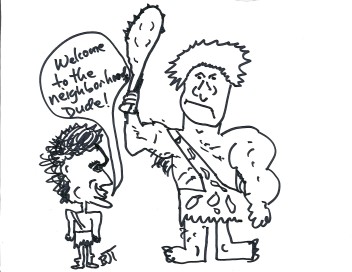Robert Zajonc (rhymes with science) was a great psychology professor at Stanford and the University of Michigan who conducted research on numerous topics that gave us greater insight into the human experience. Before he passed away in 2010 he gave brand and marketing folks a great gift. You see, one of his best insights was that people don’t like new and different things — at first. But his research also showed that as people were repeatedly exposed to an unfamiliar thing they began liking it more and more over time. It makes sense that humans evolved to avoid the unfamiliar. Better not to be the one who tries the berries from that new bush or says hello to the really big stranger holding a club, until it proves safe.
We call this human disposition to respond negatively to truly new and different things The Zajonc Effect. And it is one of the greatest reasons for the stunning lack of differentiation among brands in the same category. Imagine how this human reality impacts market research. Let’s say you have five potential brand positioning strategies. In an effort to make the best decision, you quantitatively test the alternative strategies. People being people, they respond most negatively to the most unfamiliar — and differentiating — concept. They respond best to the strategy they’ve seen before. The one your competitor is using already. That’s the strategy you run with because it “won” in research… and another undifferentiated brand strategy is born. At best, some minor incremental improvement or difference makes its way into the strategy. And nothing in the execution will save an undifferentiated brand strategy from becoming an undifferentiated brand in the end.
Look around at famous marketing failures and they are often the ideas that tested the best. Some of the greatest successes tested terribly because they were different. It is a frustrating fact of marketing that the key ingredient to long-term brand success is differentiation but people are wired to respond negatively to a truly differentiating idea upon initial exposure. This explains failures like Coca-Cola’s Surge. Millions were spent behind the launch of a brand that looked like and promised exactly the same thing as Mountain Dew. It also explains why Seinfeld, Absolut Vodka and so many huge successes tested poorly. They were really different.
What do you do if you’re in a business culture that requires testing to move forward? Create a moat of quant data to support the new idea but don’t actually test the idea directly in quantitative research. Show how this new idea addresses quantitatively derived segments’ quantitatively proven needs, but use very sensitive qualitative research to really delve into strategy development and selection.
But even more helpful, tell your boss and your bosses boss about the Zajonc Effect. They don’t know. They are probably operations or finance guys. But the marketer needs to inform and educate within the firm. I’m always amazed how open to change senior people are when confronted with facts. But I’m equally amazed at how many more middle managers and junior folks can hear about the Zajonc Effect and ignore it because, “we have to test things here.” Really? No wonder so many recent studies (Brand Keys, Greenfield/Copernicus to name a couple) are showing that few brands are differentiated. In fact, fewer were differentiated in 2009 than in 2003 according to the Brand Keys study.
Beware the Zajonc Effect.



Steve Jobs had said he didn’t ask people what they want, because they didn’t know — they hadn’t seen it yet. It hadn’t been invented. Jobs showed people what they want and need! Imagine if he had used market research.